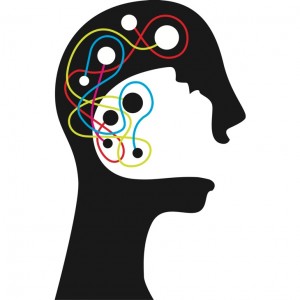Empathy on the part of the therapist or analyst lies at the heart of the therapeutic or analytic process. Along with providing a temenos, or safe and sacred environment for the therapy or analysis to unfold, the core responsibility of the therapist or analyst is to empathize with the patient or analysand as completely as possible. What does empathy mean in this context? Let’s circumambulate the term in order to arrive at a more complete appreciation of the concept and the skill set.
According to the dictionary, empathy means: 1. The intellectual identification or vicarious experiencing of the feelings, thoughts or attitudes of another, and 2. The imaginative ascribing to an object, as a natural object or work of art, feelings or attitudes present in oneself. (By means of empathy, a great painting becomes a mirror of the self.) A therapist can resonate with a patient or tune into the patient’s conscious and unconscious feelings, thoughts or attitudes. This would be skillful behavior on the part of the therapist. A therapist can also project onto the patient, feelings, thoughts or attitudes that belong to the therapist, thereby turning the patient into a mirror of himself or herself. This would be unskillful behavior on the part of the therapist, unhelpful to the therapeutic or analytic process, possibly creating real harm to the patient’s integrity.
Over 50 years ago, Carl Rogers developed what he called Client Centered Psychotherapy or Non-Directive Psychotherapy. And, he was the pioneer in conducting psychotherapy research with his many associates and students while running the counseling center at the University of Chicago. Empathy, unconditional positive regard, and congruence were the core concepts of his clinical approach. He defined empathy in this way: “To sense the client’s world as if it were your own, but without ever losing the ‘as if’ quality — this is empathy and this seem essential to therapy.” He demonstrated repeatedly and in many different research investigations of both the process and outcome of psychotherapy that empathy is essential to good psychotherapy process and good psychotherapy outcomes. His research findings about empathy have proven to be quite robust and powerful, repeatedly confirmed by other research investigators of different theoretical orientations and in a variety of other venues. This is now a settled issue due in large part to the heroic efforts of Carl Rogers in the face of withering criticism from the psychoanalysts in the Chicago School of Psychoanalysis. The followers of Franz Alexander, who coined the term corrective emotional experience, would ridicule Carl Rogers’ approach as non-corrective therapy. Subsequent psychotherapy research by other psychoanalytic research investigators, such as Lester Luborsky at the University of Pennsylvania, have demonstrated the accuracy of Rogers’ position on empathy and its power over a favorite of psychoanalytic thinking, accuracy of interpretation, on the outcome of psychotherapy for the patient or analysand.
It is an odd coincidence that Heinz Kohut, who was at the University of Chicago overlapping with Carl Rogers, placed empathy at the center of his approach to psychoanalysis, which he came to call Self Psychology. Kohut divided empathy into two parts: Abstract empathy and operational empathy. Here is a simple analogy: Abstract empathy is to introspection as learning about another is to learning about oneself. Abstract empathy and introspection, according to Kohut, are the means by which psychoanalysis collects its data about human psychological functioning. Operational empathy, on the other hand, “is the capacity to think and feel oneself into the inner life of another person.” Kohut ventured into territory that Freud and most of his followers side stepped, such as working with persons suffering from narcissistic problems and personality disorders. Mario Jacoby, one of my Jungian analysts in Zurich, spent much of his career building bridges between Kohut and Jung, which you may read about in his excellent and very accessible books: The Analytic Encounter: Transference and Human Relationship and Individuation and Narcissism: The Psychology of Self in Jung and Kohut.
Here is another odd twist of personal experience. During my training in Zurich, my two training analysts were Frau Aniela Jaffé, whom I would see in analysis on Wednesday afternoons at 4 pm and Mario Jacoby whom I would visit on Saturday mornings at 9 am. Frau Jaffé and I worked in depth on my dreams and other products of my unconscious and the interaction between us. Mario Jacoby and I focussed exclusively on our personal and analytical relationship, the transference and countertransference in other words. I felt that Frau Jaffé empathized with me in a deep and complete way, but that Mario Jacoby missed the mark consistently. He tried very hard, but he seemed unable to really get me, or Grok me, as Robert Heinlein would put it. For that reason, among others, I will turn my attention in the next blog entry to Jung’s position on the transference and countertransference and the interaction between the analyst and analysand, which as Frau Jaffé practiced it provided me with the most resonance from an analyst I have ever experienced.

